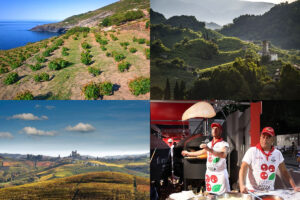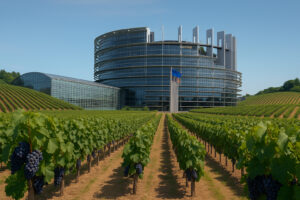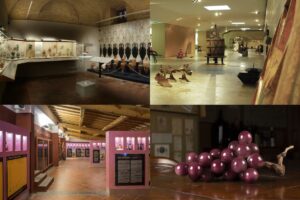The Valpolicella distribution chain, from the vineyard to the market, is certainly one of the most interesting Italian wine realities in the last 20 years because of its dynamics, complexity and development. The rise in sales of Amarone increased from 5 million to 12 million bottles from 2000 – 2011, and the production and marketing of Valpolicella Ripasso passed the 20 million-bottle mark in 2011.
At the same time, production and marketing of Valpolicella / Classic Valpolicella dropped from 50 million to 25 million bottles. These numbers perhaps, testify to an extraordinary overall rehabilitation of one of the top Italian wine names in the world, “favored,” says Emilio Pedron, one of the most “navigated” people in the Italian wine world and today at the helm of the Consortium of Valpolicella Wines (which represents 80% of the producers of the terroir; everyone except for Masi and Allegrini, the two great brand names in Valpolicella, ed), “also by a steady increase in demand particularly on markets in Northern Europe and North America. The qualitative upgrading has led to a significant growth in the value of the grapes produced (from 60 million euros in 2000 to 100 million in 2010), the wine produced (80 million euros in 2000 to 140 million in 2010) and the bottles sold by the producers (160 million euros to 300 million euros in 2010), which was all evaluated at equal and stable unit prices”.
This trend was stabilized in 2011,” continued Pedron, “bringing a 20% wine grape price increase. Also, in 2011 around 12 million bottles of Amarone were produced, the same as 2010. This result is partially due to heavy investments in the cellar, vineyard and fruit cellars, which favored re-qualification, but there is also the fact that the new generations have been strongly motivated towards new business interests. And in addition there have been positive relationships between wineries, historic big brands and small producers, and more and more bottlers”. The Consortium coordinated all the work and sponsored technical meetings, market research, area analysis, zoning, reducing annual yields, closing plants, market promotion, protection of the denomination”.
But beyond Amarone numbers and achievements (leader in the States, where it seems to be one of President Obama’s favorites), Valpolicella, its producers and its history have created a particular style of wine, unique to modern consumption of quality wines: Amarone has a strong indigenous character, linked inextricably to the Corvina grape; it almost seems that it was created for the models of evolution and consumer sensibility of the current market demand, so much so that it has often been defined as the most modern of the Italian red wines.
The drying procedure, history and tradition of Valpolicella, became a global phenomenon: drying and ripasso processes,” explains the president Pedron (who may soon become the CEO of Tenimenti Angelini, where he presided over the sale one of Amarone’s historic names, Bertani, ed) “are methods used in many Italian and foreign wine-growing areas with different vines to produce wine organoleptically close to Amarone and Ripasso, which contribute to promoting and expanding demand worldwide, but at lower prices than our wines. Valpolicella must defend and protect the drying process as history and deep tradition of its territory, demonstrating that Amarone and Ripasso are not children of a production method, but of the virtuous triangle represented by the territory, grape variety and the human hand. Emilio Pedron, head of the Consortium of Valpolicella Wines, in his presentation of the preview “Anteprima Amarone 2008”, also talked emotionally about Giuseppe Quintarelli, who recently passed away, “he dedicated so much time, effort and resources to building the identity and the terroir of Valpolicella” and said “the tasting center will be dedicated” to him, in the San Floriano (San Pietro in Cariano) business services center, the new location of the Consortium, where research and scientific experimentation on Valpolicella and Amarone will be developed; “a place created by a public-private agreement between the Consortium of Valpolicella,” says the Director Olga Bussinello, “and the Province of Verona which, in the future, will be an important center for the development of research projects and scientific experimentation, promotion, communication and marketing of the Valpolicella area, through the Consortium activities”.
Focus - The best wineries for tasting…
For Winenews tasting, the best cellars (which will then be listed among the most interesting wines in the Winenews Review – March 2012) were: in the Fumane Valley and Sant’Ambrogio territory- Santa Sophia, I Scriani, Valentina Cubi. In the Marano Valley and the San Pietro in Cariano territory - Albino Armani, Pasqua. In the Negra Valley- Guerrieri Rizzardi, Cantina Valpolicella Negrar. In Valpantena – Bertani. In the eastern valleys - Roccolo Grassi, Massimago 1883, Ca’ Rugate, Monte Zovo. Not in the “Anteprima” show, but excellent wines, were: Allegrini, Speri, Masi, Tommaso Bussola, Zenato, Tommasi, Tenuta Sant‘Antonio, Tedeschi Marion, Garbole.
Copyright © 2000/2025
Contatti: info@winenews.it
Seguici anche su Twitter: @WineNewsIt
Seguici anche su Facebook: @winenewsit
Questo articolo è tratto dall'archivio di WineNews - Tutti i diritti riservati - Copyright © 2000/2025








































































































































































































